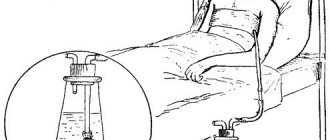Anesthesia and anesthesia
We consider it absolutely necessary to inform patients as much as possible about everything that awaits them during and after surgery.
It is very important that the patient is able to optimally prepare for the rather complex ordeal of surgery. It’s not for nothing that they say: forewarned is forearmed. Many years of experience show that only patients who are well informed in advance undergo surgery easily, recover quickly and return to active life. Will I be in pain during the operation?
Such a question for modern medicine sounds somewhat naive, because back in the second half of the 19th century, pain during surgery was over. Since then, anesthesiology (a branch of medical science that studies various types of anesthesia and anesthesia) has come a tremendous way in its development and today has everything necessary to ensure that any, even the most complex and extensive operation is painless, safe and comfortable for the patient. However, even the most knowledgeable patient sometimes worries and asks a similar question: will it hurt me during and immediately after the operation, when the anesthesia wears off? The answer in this case may sound like this: if the anesthesiologist (a specialist in pain relief and monitoring the patient’s condition during surgery and in the immediate postoperative period) is a high-class specialist and performs his work professionally, pain during the operation and after the end of the surgical anesthesia is not will.
What types of pain relief exist in modern medicine?
What types of anesthesia are used for which operations? Pain relief or anesthesia can be general or local. For minor operations (in urology these are many operations on the penis and scrotal organs, in gynecology - minor interventions on the labia, vagina, external urethral opening, etc.), local anesthesia . It consists of introducing a special substance, a local anesthetic (lidocaine, xylocaine, marcaine, etc.), using a syringe into the area of the operation being performed or into the area of the peripheral nerves that control the pain sensitivity of the operation area, which temporarily turns off the pain sensitivity. Local anesthesia can be infiltration (injection of an anesthetic directly into the area of incision and surgical manipulations), conduction (injection of an anesthetic into the area of large nerves that provide pain sensitivity in the operation area, but are themselves located outside this zone) and combined. During an operation under local anesthesia, the patient is conscious, he sees and hears everything that happens in the operating room, he can also feel all the touches of the surgeons (not pain), and sometimes experience minor pain. General anesthesia or anesthesia (the word anesthesia means only general anesthesia with the switching off of consciousness and pain sensitivity at the level of the brain, the colloquial expression “general anesthesia” is meaningless) consists of temporarily switching off the central zones of pain sensitivity and the transmission of pain impulses in the brain or spinal cord . Anesthesia can be intravenous or intubation. During intravenous anesthesia, a drug is injected into the patient's vein, which causes the pain sensitivity centers of the brain to be turned off and at the same time turns off the patient's consciousness, maintaining, as a rule, spontaneous breathing. Intravenous anesthesia is used for minor and medium-sized operations when local anesthesia cannot provide adequate pain relief. This type of anesthesia is also used at the request of the patient, when he would not like to be conscious during the operation, see, hear and feel everything that happens in the operating room. Intubation anesthesia consists of a preliminary temporary shutdown at the level of the brain of the patient’s central pain sensitivity and consciousness, temporary paralysis of the muscles, followed by intubation (insertion of a breathing tube into the trachea) and artificial ventilation of the lungs (artificial respiration) using special breathing equipment for the entire duration of the operation. This type of anesthesia is used for extensive operations on the abdominal and thoracic cavities, pelvic organs and retroperitoneal space (abdominal surgery). Such operations require that the patient's muscles are relaxed and involuntary or voluntary movements do not interfere with the surgeon and are completely excluded. Intubation anesthesia can also be used in cases where intravenous anesthesia or local anesthesia may be insufficient to provide adequate pain relief and control of the patient’s condition during medium-sized operations, as well as for medical reasons related to the presence of certain diseases of the person being operated on. A special place among the methods of general anesthesia is occupied by spinal (epidural) anesthesia (Fig. 1), which consists of introducing local anesthetics of varying durations of action (lidocaine, xylocaine, marcaine, etc.) into the spinal canal, which leads to temporary shutdown of pain and tactile sensitivity , as well as motor function below the injection site.
Rice. 1 Performing spinal anesthesia by an anesthesiologist.
Spinal anesthesia is usually supplemented with so-called intravenous sedation (medication sleep) and the patient sleeps during the operation.
This type of anesthesia is used for various operations on the pelvic organs and external genitalia. What are the characteristics of the patient’s recovery from various types of anesthesia and the immediate postoperative period?
What needs to be done to speed up the patient’s recovery and recovery after surgery? Very often, patients wonder what will happen to them and how they will feel when the anesthesia wears off? Of course, this depends on the type of anesthesia used, and on the type and extent of the operation, as well as on the general condition and individual characteristics of the patient’s pain sensitivity. After the cessation of local anesthesia , after minor operations, patients, as a rule, experience slight pain in the area of the surgical wound (the site of the surgical injury cannot help but hurt). To relieve these pains, it is usually enough to take a non-narcotic analgesic (painkiller) such as analgin, ibuprofen or diclofenac (Voltaren). If the effect of these drugs is not sufficient, more powerful non-narcotic analgesics are used - ketorol, tramadol, ketonal, etc. Typically, postoperative pain during minor and medium-sized operations lasts no more than 1 to 2 days. If they last longer, this should be brought to the attention of your doctor. After intravenous and intubation anesthesia , patients feel as if they were after a good and deep sleep, sometimes they remember bizarre dreams, occasionally experience a headache, note nausea, and in isolated cases vomiting. After intubation anesthesia, there is a soreness and discomfort in the throat, which is associated with the presence of a breathing tube there during the operation. Some medications used for these types of anesthesia can cause breathing problems. In this regard, patients are in the first hours after surgery under close supervision of medical personnel of the anesthesiological service (anesthesiologist, nurse anesthetist). Only when there is absolute confidence that there can be no breathing problems, the patient is transferred to a regular ward. After medium-sized, and especially after large abdominal operations, the patient may experience fairly intense pain for several days. In these cases, postoperative pain relief becomes a critical part of the patient's treatment in the first days after surgery. There are several postoperative pain relief regimens that are selected strictly individually and guarantee the patient’s comfortable condition in the first days after surgery. In the early postoperative period after major abdominal operations, in order to speed up the patient’s recovery and recovery, three main problems . The first problem is pulmonary rehabilitation. It is often difficult for the patient to breathe deeply and move in bed. This can lead to pulmonary congestion and even post-operative pneumonia (pneumonia). To avoid this, the patient is placed with the head end slightly elevated, he is recommended to move in bed and regularly (every 1 - 2 hours) do breathing exercises (inhaling with resistance using a special spirometer or exhaling into a jar of water). The second common postoperative problem associated with prolonged lying down and lack of muscle activity is stagnation of blood in the veins of the legs , the formation of blood clots, which can travel through the veins to the heart and further into the pulmonary artery (thromboembolism) and cause sudden death. To prevent this formidable complication, the patient is given drugs that reduce blood clotting, and constant compression (squeezing) of the legs is also applied using an elastic bandage or, which is much better, simulating natural muscle activity, variable compression using a cuff of a special device. And finally, the third most important postoperative problem is rehabilitation of the digestive system .
It is known that after major operations, especially on the abdominal and pelvic organs, there is a temporary decrease in intestinal peristalsis (contractility), which, as a rule, recovers on its own 2–3 days after surgery. To speed up this process, patients are advised to gradually return to their normal diet. On the first day after the operation, they are only allowed to drink water, on the second day they are allowed to consume liquid nutritious foods (jelly, jellies, broths), from the third day they supplement the diet with pureed boiled vegetables and minced lean meat (young beef). The solution to all three main problems of the postoperative period is facilitated by early activation of the patient. We try to ensure that by the end of the first day after extensive abdominal operations, the patient sits in bed or in a chair, and by the end of the second day he gets up, washes himself and begins to walk around the ward. On the 3rd - 4th day after major abdominal operations, the vast majority of our patients begin to walk along the corridor of the department and prepare for discharge from the hospital. Why is it important to be discharged from the hospital as early as possible?
In the hospitals that we inherited from the Soviet healthcare system, even today postoperative patient care is often organized in such a way that patients remain in the hospital after major operations for one to several weeks. Many people mistakenly believe that the longer a patient remains in the hospital after surgery, the more “fully” he will recover. Studies conducted in leading Western countries have shown that everything is happening quite the opposite. It has been proven that the longer the patient's postoperative stay in the hospital continues, the more often infectious complications (wound suppuration) caused by the so-called hospital infection occur. It is worth noting that the state of affairs with hospital-acquired infections in Russian hospitals clearly leaves much to be desired, so there is no point in staying in them. Another important argument in favor of early discharge from the hospital lies in the field of human psychology and is expressed by the proverb - houses and walls help. In familiar and comfortable home conditions, recovery occurs much faster. A necessary condition for early discharge from the hospital is the presence of close people who could provide the patient with the minimum necessary care at home. If necessary, medical personnel can come to the home of postoperative patients at the Andros Clinic.
It is important to know that you should reduce or abstain from smoking in the postoperative period. This will significantly speed up the healing of the postoperative wound.
DEAR PATIENTS! REMEMBER THAT QUALIFIED ANESTHETIC CARE AND COMPLETE POST-OPERATIVE REHABILITATION ARE ESSENTIAL COMPONENTS OF SURGICAL TREATMENT. ANDROS CLINIC HAS ON ITS STAFF A HIGHLY QUALIFIED ANESTHESIOLOGIST CAPABLE OF CONDUCTING ANESTHETICS OF ANY COMPLEXITY AND PROVIDING HIGHLY PROFESSIONAL POSTOPERATIVE CARE AND REHABILITATION EVEN IN THE MOST COMPLEX CASES. THE CLINIC USES THE MOST PROGRESSIVE METHODS OF POSTOPERATIVE PATIENT MANAGEMENT, EARLY ACTIVATION OF PATIENTS, AND QUICK DISCHARGE FROM THE HOSPITAL. AS A RESULT, PATIENTS EVEN AFTER THE MOST COMPLEX OPERATIONS (RADICAL PROSTATECTOMY FOR PROSTATE CANCER) ARE DISCHARGED FROM THE HOSPITAL FOR 4 - 5 DAYS AND 3 - 4 WEEKS AFTER THE OPERATION RETURN TO ACTIVE WORK TE.
Is it true that you can wake up during anesthesia or not wake up after?
It is theoretically possible to wake up during an operation if the dosage is incorrectly calculated, the anesthetic is selected incorrectly, or the body itself processes the injected drugs too quickly. But in practice this is extremely rare. Usually the doctor monitors the situation well and knows when a “supplement” of the drug is needed so that the patient’s sleep remains restful.
There is also a risk of not waking up after an operation performed under anesthesia, but experts note that the likelihood of death is high only in emergency and neurosurgery. True, in these situations, death more often occurs not because of anesthesia, but because of a serious condition - an acute injury or a life-threatening illness. In the case of planned operations, the probability of not surviving due to the fault of anesthesia is close to zero. In general, if the technique is followed and the necessary control is provided, anesthesia does not pose a threat to health, much less life.
Is dental anesthesia safe during pregnancy?
Implantologist Mikhail Popov emphasizes that local anesthesia not only does not threaten the health of the fetus, but is also recommended for dental treatment, especially in the second and early third trimester of pregnancy. The anesthetic is absorbed into the blood in minute quantities and does not penetrate the placenta, so it will not affect the course of pregnancy and the condition of the fetus. Yuri Timonin adds that local anesthesia allows you to “turn off” a fairly large area of the jaw associated with the blocked nerve for 1–1.5 hours. Moreover, the harm from it is always less than from the source of infection in the mouth.
Women should warn the dentist about pregnancy before starting treatment: this information will allow them to make a choice in favor of drugs without adrenaline, which are best suited for expectant mothers. It is worth postponing the solution of non-urgent dental problems at 35-40 weeks of pregnancy - but in case of urgent treatment, for example, for inflammatory processes and ulcers, local anesthesia is given throughout the entire pregnancy. As for sedation, this method is contraindicated in pregnant women: the effect of drugs on the fetus has not been fully studied.
What to expect from anesthesia in the future
The main feature of modern anesthetics is good controllability. Once the supply of the drug is stopped, it begins to quickly disintegrate. As a result, it is convenient for the doctor to control the time and depth of anesthesia for different conditions: the anesthesiologist will select one mixture of drugs for a patient with heart disease, and another for a person with respiratory tract disease. In both cases, it will be anesthesia with minimal drug load on the body. At the same time, various anesthesia devices, such as modern intravenous catheters, increase safety and comfort during surgery. Careful monitoring of the patient’s condition (measurement of pulse, blood pressure, amount of oxygen in the blood automatically) is another bonus of general anesthesia in modern conditions.
New generation local anesthetics have much fewer side effects and contraindications compared to drugs even ten years ago, and the waiting time for an effect has been reduced to five minutes. Doctors agree: over time, the percentage of allergic reactions will become zero, and the injection itself will be completely painless. The controllability of the process during anesthesia will also increase: it will become possible to bring a person in and out of a state of deep sleep even faster, as well as return him to consciousness at any appropriate moment. Oleg Karmanov does not rule out that in the near future, instead of intravenous anesthesia, a drug in the form of a pill will appear: he ate the pill and fell asleep.
True, anesthesiologists will still not be left idle: the patient’s condition is very important to constantly monitor and correct correctly. But whether it will be possible to replace anesthesia with hypnosis is a big question. In 2006, British television showed an operation to remove a stomach tumor under hypnosis, without the use of anesthesia, and in 2008, in one of the Iranian clinics, a hypnotized woman was successfully performed a caesarean section without anesthesia. However, Mikhail Popov notes that, despite the emerging information about such cases, there is no scientific research on this topic yet.











